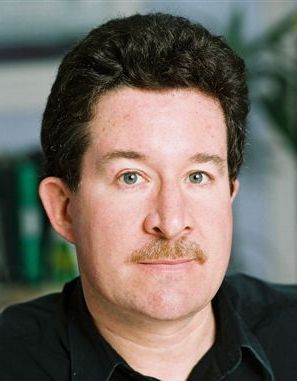November 18, 2009
Renewable energy, Ottawa's Harper gets F while provinces record mixed
John Schofield
 In a vast country stretching
from sea to sea, Prince Edward Island, Canada’s smallest province is arguably
its biggest leader when it comes to renewable energy.
In a vast country stretching
from sea to sea, Prince Edward Island, Canada’s smallest province is arguably
its biggest leader when it comes to renewable energy.
PEI, with a population of only 140,000 people, already derives about 15 per cent of its electricity from renewable sources – primarily wind turbines – and plans to reach 50 per cent by 2015.
The island, which now imports most of its electricity from New Brunswick, is well on the road to self-sufficiency.
But Canada as a whole is “shockingly” far behind other western nations, including the United States, in developing green energy, says Elizabeth McDonald, executive director of the Ottawa-based Canadian Solar Industries Association.
“Canadians see themselves as an energy-rich country – we don’t look very far down the road,” she says. “We’ve really got a lot of work to do in this country or we’ll rob our children.”
In terms of Canada’s total energy mix, renewable energy sources such as wind, solar and tidal still account for a tiny fraction of overall energy consumption.
The most recent figures from Natural Resources Canada (NRCan) show that primary energy consumption in Canada in 2007 totalled 11,965 petajoules, a unit of energy that represents one joule multiplied by 10 to the power of 15.
Of this amount, solar, wind and tidal accounted for only 0.1 per cent. Globally, renewables, including geothermal and solar hot water heating, accounted for 2.1 per cent of final consumption in 2006, according to the Washington, D.C.-based Worldwatch Institute.
If hydro and wood power are included, Canada’s record on renewables looks better. Hydro accounted for 10.1 per cent of primary consumption in 2007, while wood represented 5.1 per cent. The equivalent global figures are three per cent for hydro and 13 per cent for wood and other forms of biomass.
Fossil fuels still account for the lion’s share of consumption in Canada, with petroleum representing 39.4 per cent, gas 25.5 per cent, and coal 11.3 per cent in 2007.
Canada boasts more hydro power than anywhere in the world, but this precious resource is gradually declining, says Tim Weis, the director of renewable energy and efficiency policy for the Calgary-based Pembina Institute.
Large hydro mega-projects are harder to build today because of environmental and social concerns, and the impact of global warming is depleting hydro reservoirs.
Today, says Weis, 58 per cent of Canada’s electrical power comes from hydro, compared with 60 per cent in 1999.
After decades of neglect, the country’s electricity transmission infrastructure is also badly in need of renewal, and in many parts of the country, provinces are poorly connected on the national grid. Some are more closely linked to U.S. states than their neighbouring provinces.
These transmission issues could hobble Canada’s adoption of renewable energy. “One of the reasons that Europe has been more successful in adopting renewables,” notes Weis, “is because they’re so interconnected. If there’s no wind power in France, you can get it from Spain.”
Canadian entrepreneurs came comparatively late to renewable energy, but the industry is growing quickly.
Wind power is the most mature sector. Canada is the world’s 12th largest producer of electricity from wind, says Weis, although the country is the sixth largest consumer of electricity globally and, on a per capita basis, is among the top three.
Wind power’s growth rate in Canada, however, has already reached about 20 per cent a year. The solar industry is about 10 years behind wind, Weis estimates, because solar power now is significantly more expensive to produce.
But over the next 20 or 30 years, experts predict, solar will likely outstrip wind power because the equipment can be placed almost anywhere and there are no moving parts, so very little maintenance is required.
The development of the renewable energy industry in Canada has been hindered by the failure of the federal government to establish stable, long-term goals and policies to encourage growth, says Weis.
Because the investments involved are so huge, companies need to know that policies will be in place for at least 10 or 20 years, and European leaders have delivered.
Not so in Canada.
In 2002, the federal Liberal government introduced incentives to spur the production and demand for renewable energy. In 2005, the Conservative government cancelled them, but later reinstated them.
But in the last federal budget, no additional money was put into the program, again raising doubts about Ottawa’s continuing commitment. “There’s big concern in the industry,” says Weis, “that the money’s going to run out.”
While the provinces have performed better than their federal counterparts, their record is mixed.
Some provinces, such as New Brunswick and Nova Scotia, have set targets for renewable energy production. New Brunswick plans to derive 33 per cent of its electricity from renewable sources by 2016, while Nova Scotia is aiming for 22 per cent by 2013.
British Columbia has pledged that any new electricity generating capacity will be green-house-gas neutral.
Manitoba already derives almost all its electricity from hydro power. Alberta and Saskatchewan have no targets. But Weis says even the most ambitious provincial targets see renewables comprising only from one to five per cent of the total energy mix.
He says many U.S. states, by comparison, have legislated targets that would see renewables provide 10 to 20 per cent of the total energy supply by 2020.
Still, there are signs of progress. With the passage of its Green Energy Act last February, Ontario could potentially become a North American leader in renewable energy, says Weis.
Under the progressive law, Ontario will follow the German model by placing no caps on renewable energy production and guaranteeing that all new facilities will be incorporated into the provincial power grid.
The initiative could be undermined if additional nuclear facilities end up taking most of the transmission capacity. But on its merits, the Green Energy Act “really creates that open season for people to start building,” says Weis. “That’s unique in Canada and in North America right now.”
The impact of U.S. President Barack Obama’s energy policies may force all governments in North America to accelerate their renewable energy plans.
Even under former president George W. Bush, the United States was the world’s largest wind energy market. Obama has pledged to double renewable energy output in the next three years, and much of that will come from wind.
The U.S. administration has also committed $11 billion to upgrading the country’s electricity transmission grid, and a tax credit for renewable energy production has been converted to up-front cash for companies strained by the credit crisis.
“Many companies are really looking to the States now,” says Weis, “which probably means a flight of capital to the U.S. unless Canada comes up with equivalent programs.”







